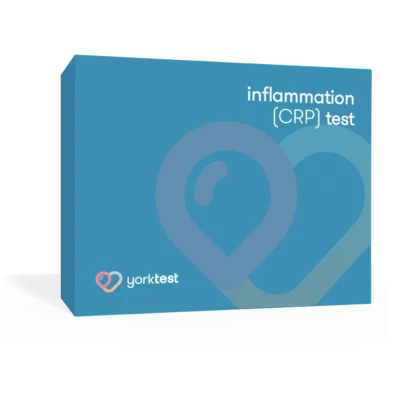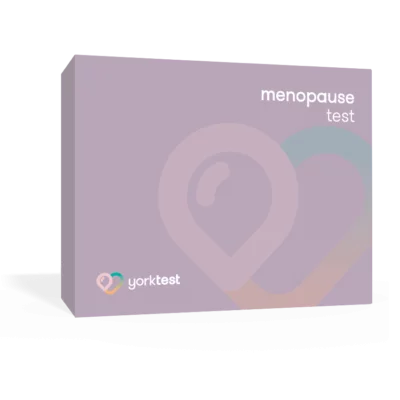
How To Test For Food Intolerance and Why It’s Worth It
- What Is A Food Intolerance Test?
- How To Test For Food Intolerance
- Food Intolerance Tests
- Elimination Diet
- Breath Tests (Lactose Intolerance Only)
- How To Test A Child For A Food Intolerance
- Why Is It So Important?
- Relief from Everyday Symptoms
- Support for Digestive Health
- Boost to Overall Wellbeing
- Reduced Risk of Long-Term Issues
- Greater Confidence in Social Settings
- Want To Test For a Food Intolerance? Contact YorkTest
Did you know that about 20% of the UK population has some form of food intolerance? While this might shock you, what is perhaps even more surprising is the fact that many people don’t realise they have an intolerance, or are never diagnosed with one. A lot of this is down to many sufferers not knowing how and when to test for an intolerance.
Testing for a food intolerance may seem quite complex, but it’s actually incredibly simple. You don’t have to visit a lab, you don’t have to travel far and wide to visit testing centres, and you don’t need any prior medical knowledge. You can test for food intolerances in the comfort of your own home, and the testing process is easy.
So, if you have an inclination or a feeling that you may have a food intolerance, we will detail how to test for a food intolerance and also discuss why doing so is important.
What Is A Food Intolerance Test?
A food intolerance test helps to identify whether your body has an adverse reaction to certain foods. One of the most common methods involves a blood test that measures IgG antibodies to specific foods; these antibodies may indicate a sensitivity or intolerance.Â
Other approaches include elimination diets, where foods are systematically removed and reintroduced to observe reactions, or breath tests that are used to detect lactose intolerance. While these methods are sometimes used, the blood test is the most common and (arguably) most effective approach.
How To Test For Food Intolerance
Strictly speaking, there are two ways to test for a food intolerance. The first is via a blood test (IgG), and the second is through an elimination diet. As we are an experienced provider of food intolerance tests, and an at-home blood test is what we would recommend, we’ll look at the blood tests first.
Food Intolerance Tests
Performing an at-home blood test is remarkably easy. All you have to do is order a test online, wait for it to arrive, and follow the simple instructions. This typically involves collecting 2-3 drops of blood and then safely posting it back to the laboratory.
The blood test typically measures the IgG antibodies to food, which can indicate a form of food intolerance. While most food intolerance tests only test for IgG4, our tests measure all four subtypes of food-specific IgG (1-4), meaning no intolerance or allergies will slip through the cracks. Furthermore, our results process is remarkably straightforward, with easy-to-understand traffic light systems indicating the types and severities of the intolerance, as well as expert support as and when required.
At-home blood tests are not only extremely effective at identifying food intolerances, but they are also efficient and quick. They take the guesswork out of intolerances, meaning you can make more positive changes quicker, leading to a better quality of life.
Elimination Diet
An elimination diet is another method that’s commonly used to test for food intolerances. The process typically includes carefully removing suspected trigger foods from your diet for a period of time, usually for a few weeks, and monitoring and recording symptoms.
If symptoms improve during the elimination phase, you may then gradually reintroduce suspected foods into your diet and monitor for the return of potential symptoms. However, it is crucial to enact this process under the guidance of an experienced healthcare professional.
While elimination diets can be effective, they do require the oversight of an experienced healthcare professional, as trying to complete the process on your own can quickly lead to misdiagnoses and even intolerances being missed. As an elimination diet is effectively trial-and-error, the path to a diagnosis can also be arduous and frustrating, subjecting you to unpleasant symptoms and resulting in a stressful experience.
Breath Tests (Lactose Intolerance Only)
We would be remiss not to mention the breath test, but this is only used for suspected lactose intolerance. A breath test can be used to measure the amount of hydrogen in your breath after consuming lactose.
How To Test A Child For A Food Intolerance
Testing children for food intolerances is very similar to testing an adult. Both blood tests and elimination diets can be used for children with some specific considerations. One major difference is that elimination diets have to be done with even more care and attention.
As children grow and develop, ensuring they have access to the right amount of nutritious and healthy food is essential. Needlessly removing food types from your child’s diet can result in a loss of important nutrition for your child, meaning this could harm their development and growth. This is why you must only remove foods under professional supervision and with great care.
As far as blood testing goes, the process is very similar to that of an adult. One of the biggest things to consider is handling your child’s anxiety level around the test; after all, it wouldn’t be unusual for your child to be squeamish around the thought of drawing blood. Luckily, we understand the different needs and wants of your child and have a separate junior food intolerance test. Our junior food intolerance test offers the same great quality testing, but is tailored specifically to your child. If you have a child between the ages of 2 and 17 and want to discover if they have a food intolerance, then be sure to check out our test today.Â
Why Is It So Important?
As mentioned before, testing for food intolerances is extremely important. It’s crucial for managing symptoms, improving overall well-being, and preventing potential health complications. Testing and treating food intolerances can lead to a much higher quality of life, better mental and physical health, as well as a more fulfilling lifestyle. Some of the many ways testing and treating food intolerance can help include:
Relief from Everyday Symptoms
Unmanaged food intolerances can trigger a wide range of uncomfortable symptoms, including bloating, stomach pain, gas, headaches, fatigue, and skin issues like rashes or irritation. By identifying and eliminating trigger foods, you can see a significant reduction or complete disappearance of these symptoms.
Support for Digestive Health
Intolerances often indicate that your digestive system is under stress. Addressing these issues can help restore gut balance, reduce inflammation, and prevent ongoing digestive discomfort.
Boost to Overall Wellbeing
Managing food triggers can help restore confidence, comfort, and a sense of normality. This all leads to a better quality of life.
Reduced Risk of Long-Term Issues
While food intolerances aren’t usually dangerous in the short term, they can contribute to chronic digestive issues, low-grade inflammation, or nutritional imbalances if ignored. Taking action early can help to prevent future health complications.
Greater Confidence in Social Settings
Dining out, going to parties, or simply eating with family can be stressful when you’re unsure which foods might cause a reaction. With proper management, individuals can enjoy more freedom and less anxiety around food in social situations.
Want To Test For a Food Intolerance? Contact YorkTest
If you or a loved one needs to test for food intolerance, contact us here at YorkTest. We offer premium quality food intolerance tests for all ages, and we are adept at providing great quality support and advice.Â
But that’s not all, as we also offer all kinds of health tests, including vital at-home allergy testing. So if you need a health test, be sure to contact us today.Â









